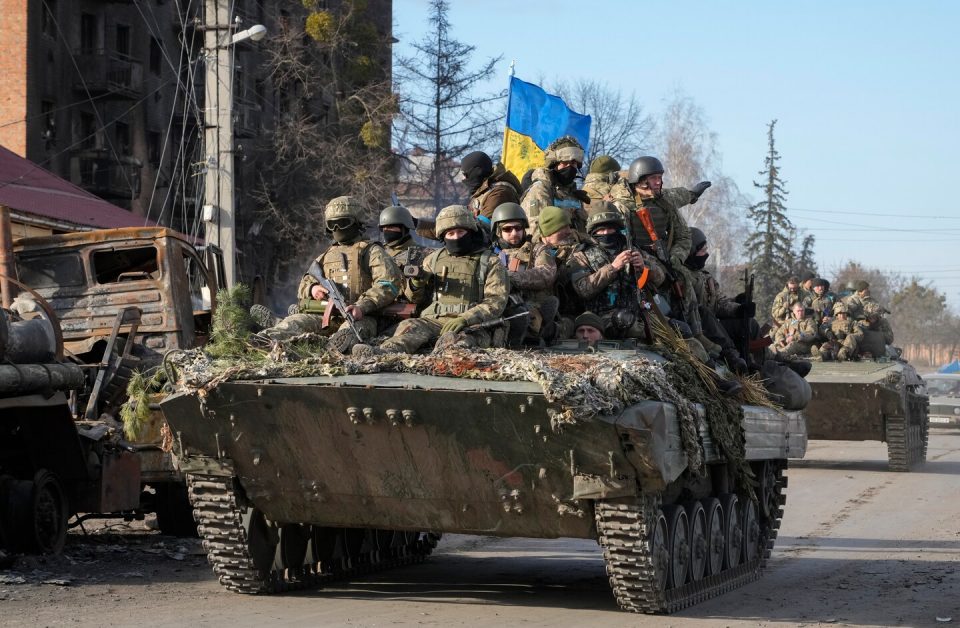Did U.S. security assistance — roughly $2 billion between 2014 and 2020 — make the Ukrainian military more effective? Our research points to one explanation for why U.S. security assistance may have had greater success in Ukraine.
Ukraine seems to be a case where security assistance made a positive contribution — although Ukraine’s own efforts are probably most important. The United States sent security assistance to Ukraine between 2014 and 2020, as part of a broader Western effort to strengthen the Ukrainian military.
It’s all about the institutions
In 2014, institutional problems contributed to Ukraine’s combat ineffectiveness — Ukraine’s armed forces could do little to stop the Russian seizure of Crimea. When the war began, only 6,000 of the 41,000 Ukrainian army personnel were available, and its battalions had rarely conducted live fire exercises.
Later, in the Donbas region of eastern Ukraine, flaws in command and control reportedly led to delayed orders that contributed to the February 2015 defeat of Ukrainian forces at Debaltseve. Ukraine was eventually able to stop the separatist advance, in part by mobilizing older veterans with prior military service. Ukraine also depended on “volunteer” paramilitary units, some of which were funded by oligarchs with their own political agendas.
Ukraine’s defense industry and procurement systems faced particular problems. Although Ukraine could produce modern weapons, its defense industry focused on exports rather than meeting local needs, and the sector was notoriously corrupt.
Procurement snags also prevented Ukraine’s military from receiving U.S. equipment. A 2016 RAND study observed that Ukraine’s laws limited the authorities under which the United States could transfer military equipment to Ukraine. This effectively slowed the transfer of Coast Guard cutters, anti-tank missiles and other equipment. Changes to the procurement system would become a critical front not only to address corruption, but to enable Ukraine to defend itself.
Political shifts led to institutional changes
Confronting institutional weakness has become an increasingly important part of security assistance worldwide — our research sheds light on when these efforts succeed or fail. Institutional changes to strengthen civilian oversight or prevent corruption often fail in the face of opposition from local political networks. Institutional change is more likely when it is in the interest of local leaders, including when new leaders with weak ties to the armed forces benefit from stronger oversight.
The election of Petro Poroshenko, Ukraine’s president from 2015-2019, represented a departure from the prior regime. But the oligarchs who controlled Ukraine’s business assets continued to protect their informal ties to defense institutions. Investigative reports found that Poroshenko personally benefited from these ties — and a close associate was implicated in a defense procurement scandal in 2018.
Poroshenko cooperated with some restructuring efforts that aligned with his interests — but avoided those that affected the defense industry. Ukraine adopted U.S. advice as the blueprint for institutional change. Poroshenko made the minister of defense a civilian position, and restructured command roles and responsibilities in eastern Ukraine. But efforts to update Ukraine’s opaque procurement process made little headway and Poroshenko’s government slow-rolled changes within UkrOboronProm, Ukraine’s state-owned defense conglomerate.
The election of actor-turned politician Volodomyr Zelensky as president in 2019 offered new hope. He campaigned as an independent reformer focused on weakening the hold of oligarchs. He appointed Andriy Zahorodniuk, the former head of the Ministry of Defense Reform Office, as the new minister of defense. But Zahorodniuk was removed after six months, and Zelensky faced criticism for not moving quickly enough.
But Zelensky had few ties to Ukraine’s oligarchic networks, and the country made progress on critical changes related to defense procurement. A new 2020 defense law addressed longstanding issues by increasing transparency and competition in defense procurement. Leaders intent on change also took over Ukraine’s defense industry, and a 2021 law finally instituted wide changes within UkrOboronProm.
As U.S. assistance increased from $250 million in 2016 to $390 million in 2021, Ukraine’s improving institutional structure enabled the receipt of Javelin missiles, patrol boats, night vision goggles and secure communications equipment.
The role of security assistance
Overhauling Ukraine’s procurement institutions has facilitated the recent surge of security assistance to Ukraine — and has likely enabled the military to draw on more locally produced equipment.
U.S. assistance contributed to these defense updates because the necessary conditions were in place: Ukrainian leaders recognized the value of Western support for their own political success. Zelensky’s government saw the value of weakening the oligarchic interests that were working against them. Ukrainians did not always see the value of Western advice and Western leverage was limited given that Ukraine had no real prospect of NATO membership. Proposals to adopt Western tactical command structures, for instance, were largely ignored.
Ukraine’s military performance in recent weeks reflects other factors, including combat experience gained in the 2014 conflict, broad public support and a committed population — not to mention Russian miscalculations. The conflict is not over, and much could change. Nonetheless, the experience in Ukraine suggests U.S. security assistance could achieve greater impact by focusing on institutions, and responding when political openings emerge.


